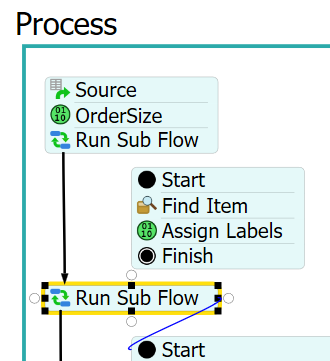Hi all,
I have made a model where I’m simulating order picking with an «Vertical Lift Model». It is a set of racks with an ASRS serving the racks. There are multiple trays in one rack, represented as levels in FlexSim storage module. When an item is due to be picked, the whole tray is moved to a staging area, represented by a queue. In FlexSim this is done by loading a single item onto the ASRS and when the item is unloaded at the queue, the rest of the items in that level is moved to the queue. An operator can then pick the correct item, or amount of the given SKU. When the picking is done, the tray is moved back to the same level by loading a single item onto the ASRS and then move the rest of the items to the level.
My model works fine when items in the same order are stored on different trays, but when two or more items are stored on the same tray, the model stops. When there are multiple items for one order stored on the same tray, the first item is picked successfully, but the reference to the rest of the items on the same tray is removed. When this happens, the elements in the order array goes from pointing to a flow item to <no path>. This problem also occurs if I have two orders being picked simultaneously, where items are stored on the same tray in both orders. The first order will successfully pick the item, but in the second order the array element will go to <no path>.
Attached is a model which recreates this problem.
order_picking_from_same_level.fsm
Thanks in advance

